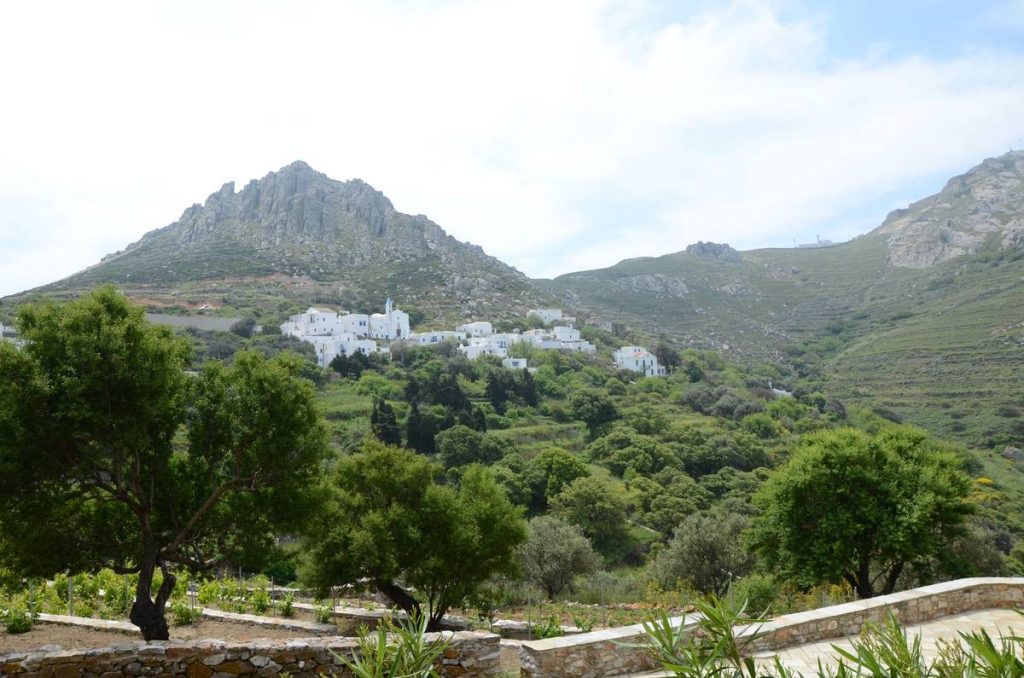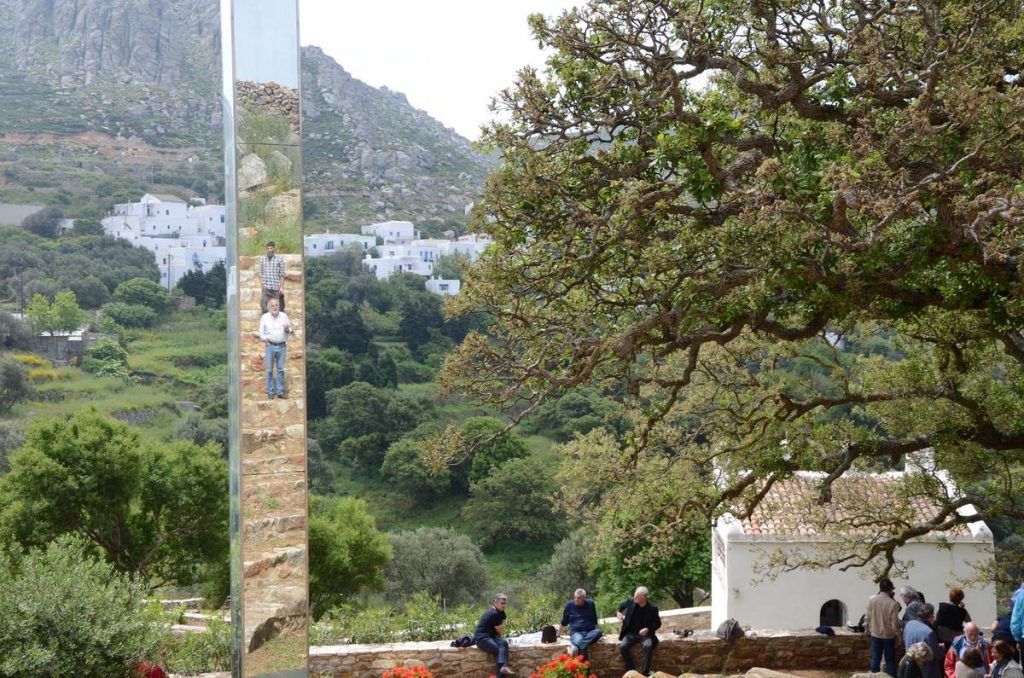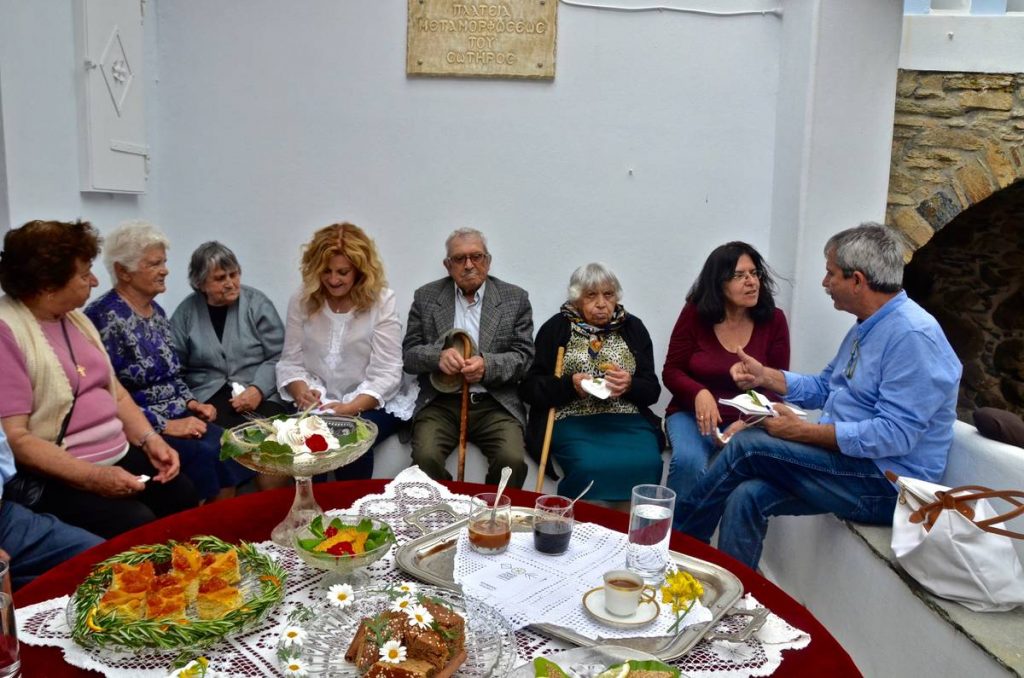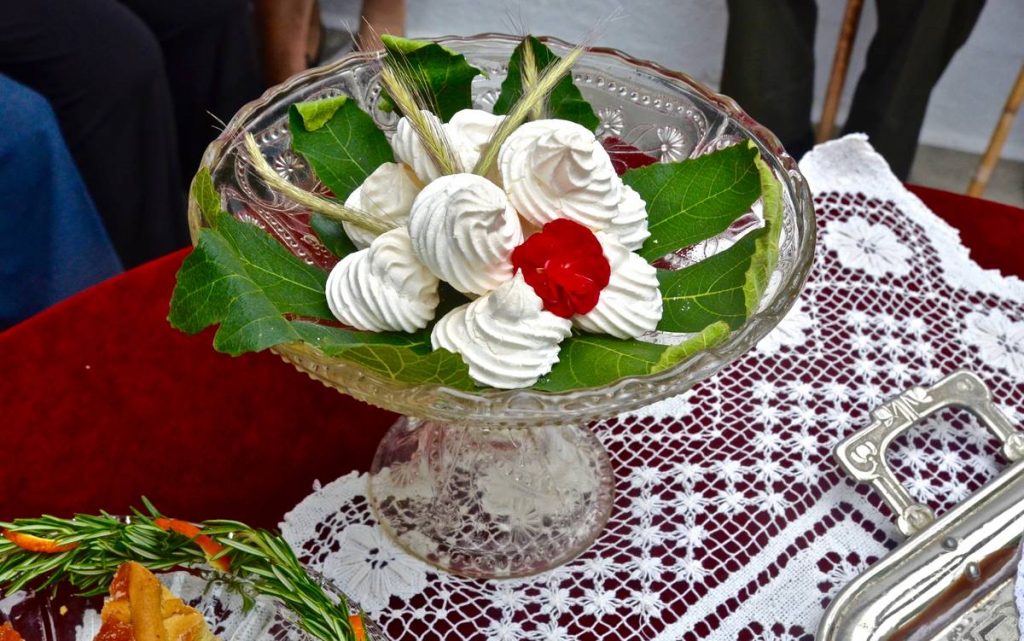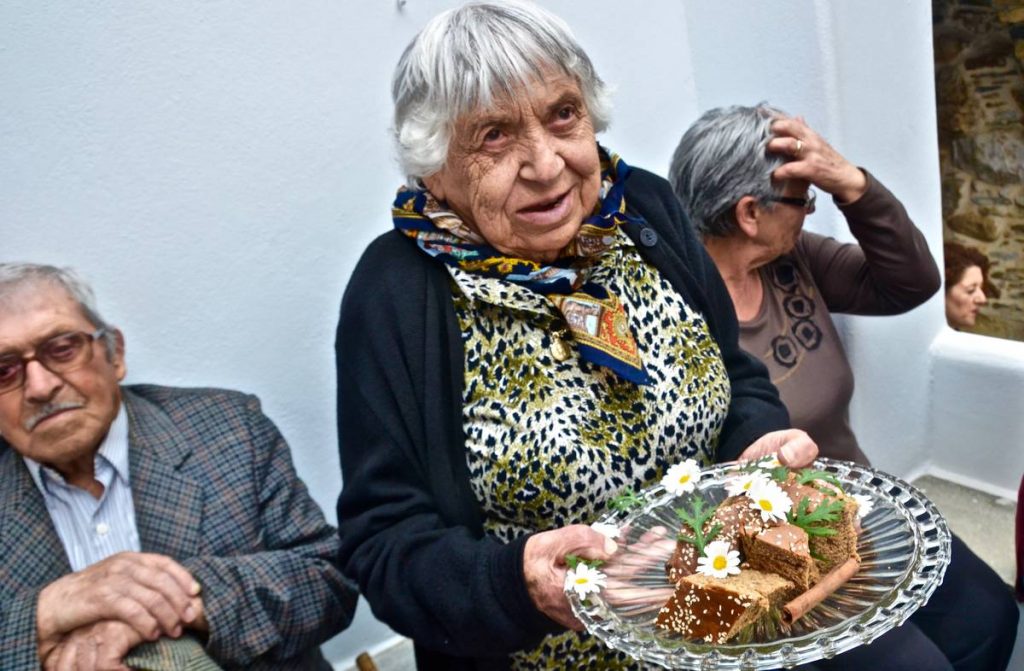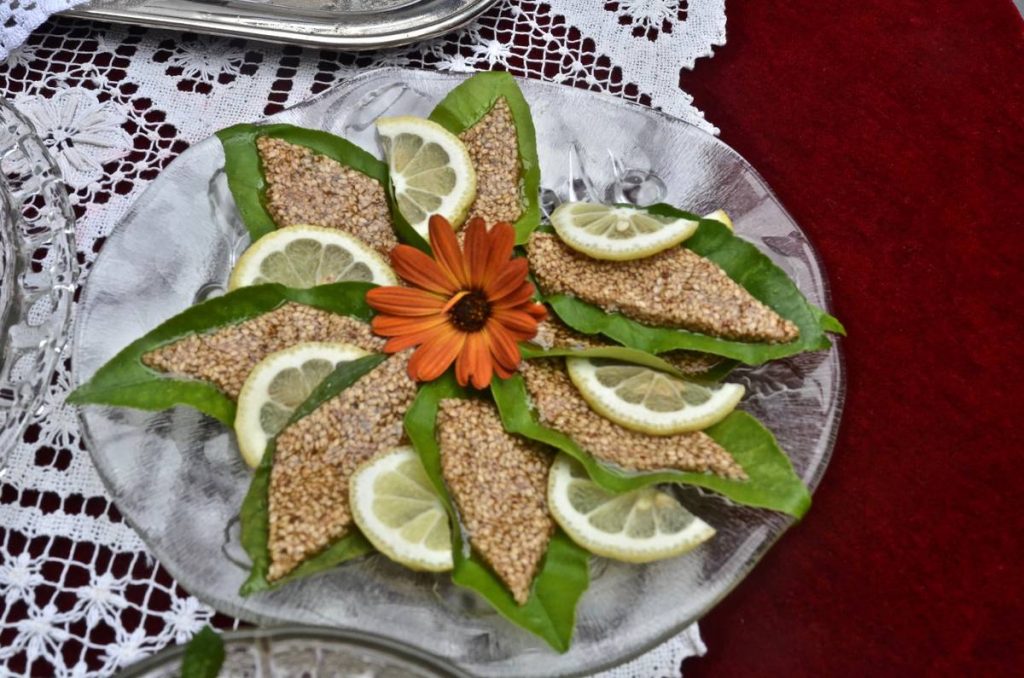The latest manifestation of Tinos Food Paths 2017 took place in her Kumaros Of Tinos, a medieval village perched on the northwestern outskirts of Xombourgos, a village that while the 2011 census shows with 30 inhabitants from what we learned in the winter is not inhabited by more than ten nomads.
The official program was to attend in the village amphitheater a discussion of professors from the University and some representatives from the field of farming in order to share their knowledge and experiences about the connection of Tourism, Gastronomy and the Primary sector.
The 500-seat stone amphitheater, protected by centuries-old oaks and in a sheltered spot, was created with great care in a historical and fertile estate of the island, which once hosted the summer resort of the School of Ursulines and today hosts an impressive high Costa Tsokli who was in charge of the construction of the theater.
Before the start of the event we learned that the village invited us - unexpectedly because it was not in the plan of the organizers - for an acquaintance and so we climbed about 500 meters to reach the village square. Crossing the alleys we reached the central square of the village, the square of the Transfiguration of the Savior. There, in the community cafe, the residents were waiting for us, who, together with the doors of their houses, opened their arms and hearts wide.
The reception included the treat of coffees accompanied by handmade local pastries, by the experienced hands of the old housewives of the village. Only the presentation and the serving ritual included the stamp of the new generation, which seeks to draw all the knowledge from the old generation, to continue the traditions of the place, in its own way.
Silverware had been polished, lace had come out of the trunk, glass tablecloths had been recruited, tablecloths had been freshly ironed. And the new generation, two or three little girls made the compositions, with the flowers, with the sheaves to be full and the look.
Each grandmother had two words to say about her dessert, to remind techniques, to testify the detail that would make the difference. Pasta flora, beige, fish dipped in syrup or honey and all beautifully decorated. Without any supervision, no guidance.
And that's where my mind immediately went to the Tinowfoodpats revolution. The revolution of collectivities and the return to the language of quality, the importance of the little things and the small details that beautify life. Like a crimson geranium among the white beige or the flowers of the sparta in the fish.
I met her Antonia Zarpa at the time of farewell at the port and I pointed it out to her. That he built a school and spread the germ of good taste and elegance. He did not answer me and smiled. In the evening I had the answer in my email. Modest and of good taste of course:
"George, forgive me for what I will tell you; but I have learned from these grandmothers.
Because the beige was decorated in the buffet. The artichoke radially. The cheese was made like a heart.
The potato meatballs were placed elsewhere, the round ones and the long ones elsewhere.
They always kept garnish when making cod garlic.
They always had 2 sprigs of parsley in the glass.
They always collected the most beautiful leaves for the pastel.
They always brought out their good dishes at the festival.
They put the sardines to look at their tails on one side.
They put white almond in the mince.
They laid the linen and embroidered the cut curtains with a pin for the occasion only.
The Cycladic women all had an aunt as a maid in Syra and Kolonaki.
I had too.
Aunt Argyro… with soft arms and transparent hands.
With her patience and her smell, she taught me to eat the cheese with the melon at the end and to decorate the okra perfectly.
She was a maid to the Negrepontis in Kolonaki. "
An event followed at the village theater, where many interesting things were heard about traditional agriculture and animal husbandry, but also about modern farming models. But I had stayed in the previous phase, and in the spread of the germ of beauty and good taste. It had fascinated me more!


